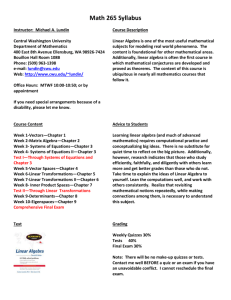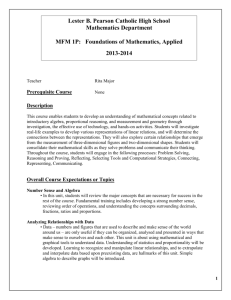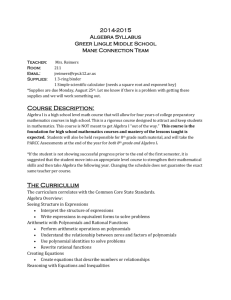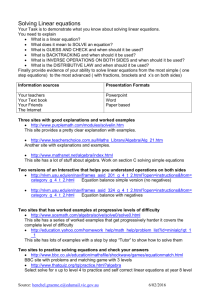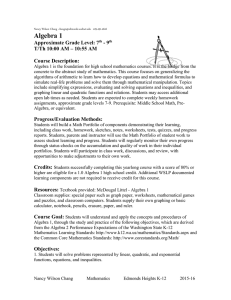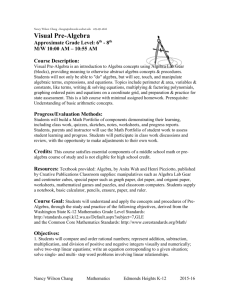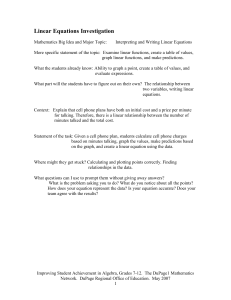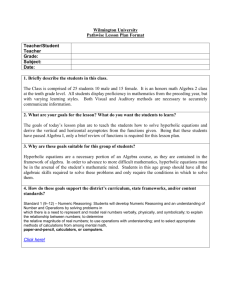91029 Apply linear algebra in solving problems
advertisement
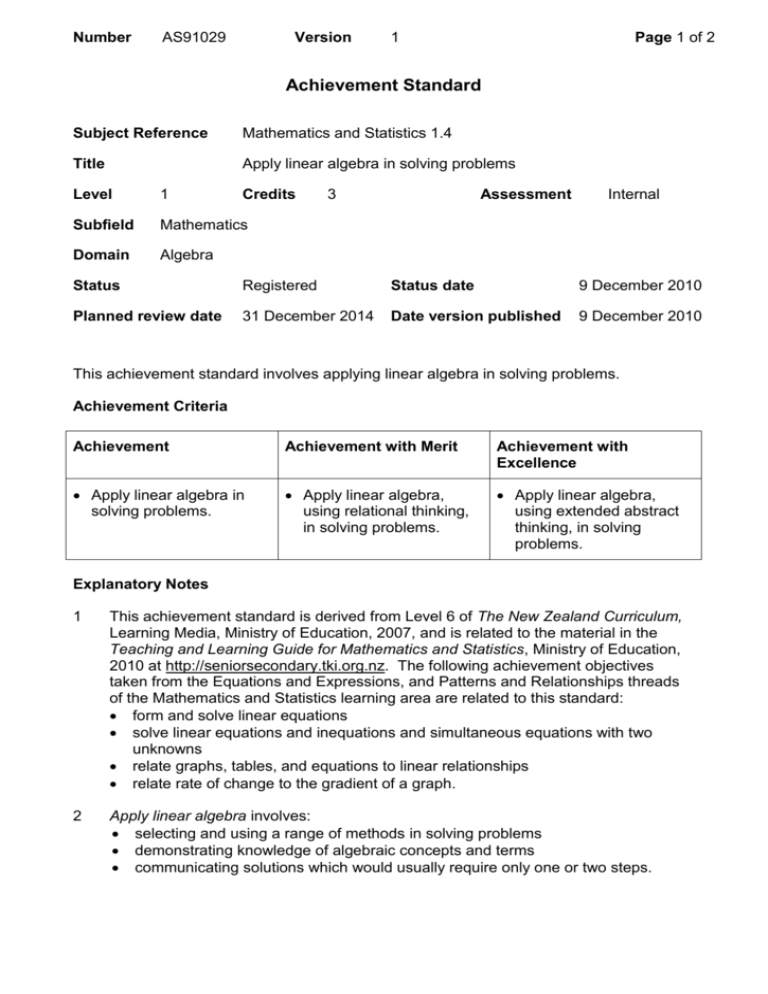
Number AS91029 Version 1 Page 1 of 2 Achievement Standard Subject Reference Mathematics and Statistics 1.4 Title Apply linear algebra in solving problems Level 1 Credits Subfield Mathematics Domain Algebra 3 Assessment Internal Status Registered Status date 9 December 2010 Planned review date 31 December 2014 Date version published 9 December 2010 This achievement standard involves applying linear algebra in solving problems. Achievement Criteria Achievement Achievement with Merit Achievement with Excellence Apply linear algebra in solving problems. Apply linear algebra, using relational thinking, in solving problems. Apply linear algebra, using extended abstract thinking, in solving problems. Explanatory Notes 1 This achievement standard is derived from Level 6 of The New Zealand Curriculum, Learning Media, Ministry of Education, 2007, and is related to the material in the Teaching and Learning Guide for Mathematics and Statistics, Ministry of Education, 2010 at http://seniorsecondary.tki.org.nz. The following achievement objectives taken from the Equations and Expressions, and Patterns and Relationships threads of the Mathematics and Statistics learning area are related to this standard: form and solve linear equations solve linear equations and inequations and simultaneous equations with two unknowns relate graphs, tables, and equations to linear relationships relate rate of change to the gradient of a graph. 2 Apply linear algebra involves: selecting and using a range of methods in solving problems demonstrating knowledge of algebraic concepts and terms communicating solutions which would usually require only one or two steps. Number AS91029 Version 1 Page 2 of 2 Relational thinking involves one or more of: selecting and carrying out a logical sequence of steps connecting different concepts and representations demonstrating understanding of concepts forming and using a model; and also relating findings to a context, or communicating thinking using appropriate mathematical statements. Extended abstract thinking involves one or more of: demonstrating understanding of abstract concepts developing a chain of logical reasoning, or proof forming a generalisation; and also using correct mathematical statements, or communicating mathematical insight. 3 Problems are situations that provide opportunities to apply knowledge or understanding of mathematical concepts and methods. The situation will be set in a real-life context. 4 The phrase ‘a range of methods’ indicates that evidence of the application of at least three different methods is required. 5 Students need to be familiar with methods related to: using formulae forming, graphing or manipulating linear models such as C 8 0.75t when solving problems comparing the rate of change to the gradient of a graph using simultaneous equations, inequations, or graphs when solving problems such as those involving simple linear programming. 6 Conditions of Assessment related to this achievement standard can be found at www.tki.org.nz/e/community/ncea/conditions-assessment.php. Replacement Information This achievement standard and AS91028 replaced unit standard 5238. Quality Assurance 1 Providers and Industry Training Organisations must be accredited by NZQA before they can register credits from assessment against achievement standards. 2 Accredited providers and Industry Training Organisations assessing against achievement standards must engage with the moderation system that applies to those achievement standards. Accreditation and Moderation Action Plan (AMAP) reference 0233


